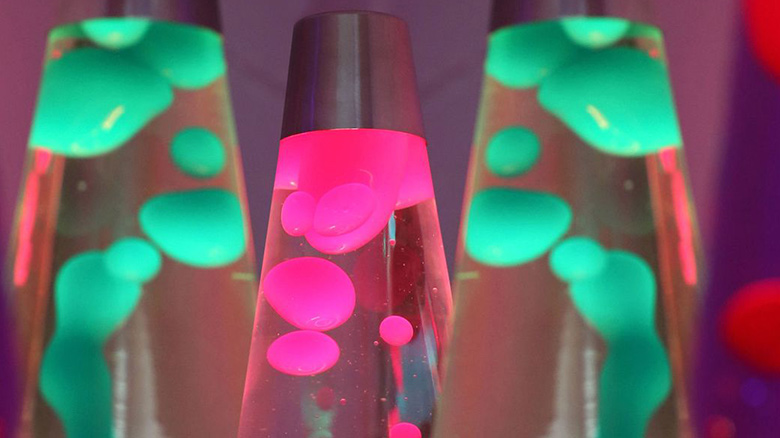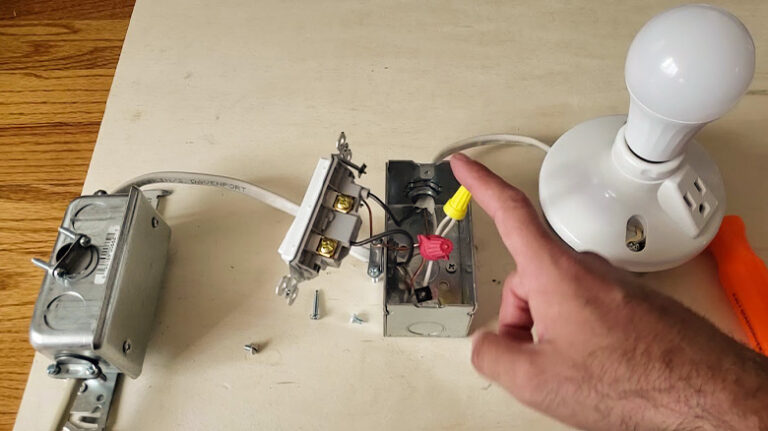Why Isn’t My Lava Lamp Flowing? What’s the Issue and How to Repair It?
The flow inside the lava lamp adds a different vibe to your home décor. It creates a relaxing atmosphere and calm vibe with retrospective color changes.

How Do You Fix a Lava Lamp That Won’t Flow?
The fix is straightforward if the lava inside the lamp isn’t flowing. In most primary cases, turn off the lamp and let the wax cool down, then turn on the lamp, turn it off again when the resin softens and let it rest for a night to set nicely. Turn it on in the morning and wait at least two hours until the lava is flowing and allow it to run for about 8-10 hours straight to get the perfect flowing.
If this process is still not working, then you shall try another. You’ll notice a metal coil just in the bottom of your lava lamp’s glass jar, accelerating the heating. It helps to generate more heat from the electric supply underneath the glass jar and helps to melt the wax appropriately and rapidly.
If the metal coil is located on the side of the glass jar, it might not process enough heat to the glass jar to create any lava flows.
So, you need to apply a simple trick to bring the coil into the bottom of the glass jar. First, you need to turn off the lamp and let it cool for some time before you touch it so that it won’t burn you, as the lamp’s lamination depends on the heat of the lamp.
Use a thick towel to hold the lamp, as you don’t want the wax to set appropriately, discouraging the coil. Gently tilt the lamp until the coil falls into the middle again. Don’t shake the lamp during this process; this will break the wax into the water and will cause a cloudy effect in your lamp.
Turning on the lamp won’t help to melt the wax down, which is a massive problem in fixing the coil. Use a hairdryer to create sufficient heat in the jar for melting the wax.
What Does It Mean if Your Lava Lamp Isn’t Flowing?
The flowing of lava lamps can be affected by the potential thermal disturbance caused by environmental issues.
- If your room temperature is around 22° C(68-72° F)
- If the lamp is placed near a window
- If the lamp is near any radiator the r
- If your lamp is not heated enough by the coil
This potential disturbance might prevent the creation of the flow properly. So, try a new spot where nothing can affect the lamp, keep it turned off for at least 8-12 hours to set the wax down, then turn the power on without starting the lamp; by this process, the wax will completely melt and get separated from the water.
In most cases, a lava lamp takes more or less 2 hours to start to flow according to the size and voltage. Try to use the lamp regularly in a scheduled manner. Use it for 8 hours straight and let it rest for 6-10 hours to make it run properly, and this process will keep the lamp vigor.
If your lava lamp is still not flowing, try with high voltage with dimmer light. Make sure the lamp can take the burden of the new voltage. If not, it might cause a fire in your house as lava lamps are easily provoked.
How Do I Know if My Lava Lamp Is Broken?
A lava lamp creates a lively effect that claims our psyche. The beautiful dance of the wax makes the lava lamp more dramatic. Though a lava lamp doesn’t cost too much, they are fragile and can create a lot of trouble if you can’t take proper care of them.
But the fun part of lava lamps is, that if you can reuse a lava lamp it can be used for more than 20 years! (The brand and the wax quality makes a difference, but that doesn’t mean you can’t recycle and use it again) which is worth it. Many of us throw out lava lamps after 1 or 2 years of use because, these are very unstable, and can be affected by weather or room temperature.
Furthermore, the wax acts weirdly after some use, it bumps up and creates a cloudy atmosphere in the jar after which the lava flowing stops. Consider your lamp is broken if this happens but that doesn’t mean you can’t fix it!
I can tell you how you can fix it.
- Turn your lava lamp off and let the cloudy wax set for almost 8-12 hours until it gets hard and sets down again.
- Now remove the upper cup of the lava lamp, where you will find the glass jar of lava lamp has a sealed cap or screwed cap on to prevent the water from falling out.
- Remove the cap and pour the water gently without harming the wax, be careful with it; it process as you don’t want any wax to fall.
- Put some tap water by tilting gently and pour them to remove the surplus dirt from the wax. Continue this process almost 3 times.
- Now add some distilled water into the jar according to the size of the lamp make sure to keep the 2-inch gap between the jar because there are some other things to add on. Try to avoid using tap water instead of using distilled weather tap water will also, work tap water contains other chemicals which can affect the lava flowing.
- Add 2-3 drops of dishwashing gel. This will make the lava flow look good as it helps the promotion of breaking the wax between the water so the wax and water won’t be mixing up in an increase of heat and it will allow the lamp to enjoy simultaneously for 8-10 hours. Don’t add too much dishwashing gel that would cause a bubbly, foaming effect and will all the breakage of wax too which will create an ugly look in the lamp. Try to use clear soap so it won’t affect the coloration of the lamp.
- Turn the lamp on time and allow it to heat for 2-6 hours until the wax is melted.
- Now add Epsom Salt with half a cup of warm water (150 g). Measure down the water then add a teaspoon of salt gently to the water and stir well until the salt gets dissolved in the water.
- Use a straw to add the Epsom salt slowly and observe how the wax is reacting against it. Drop about 1 teaspoon of water at a time and wait 3-5 minutes to see the reaction. The Epsom will gradually help to increase the density of the water and will help the lava to rise higher and more dramatically. This is the most time-consuming process, so ensure you have the patience to not overdo it.
- Add the top again when you are happy with the result. Make sure not to use any other salt, fragrance, or color that will make the lamp cloudy again.
Frequently Asked Questions
Why is my lava lamp solid?
Your lamp must have been turned on for too long that’s why the density of the wax got much low, and it kind of creates a cloudy effect in the whole water. Turn the lamp off and let it take proper rest.
Can I leave my lava lamp on while I sleep?
If your lamp has a scheduled meter attached to it, then you can keep it turned on while you go to sleep as it’ll automatically turn off; if not then you might not keep them turned on for more than 8 hours. The limitation of usage should be monitored regularly or it will catch fire.
Is it possible to fix a lava lamp?
Definitely, as long as the glass jar is not broken and the wax remains unharmed any problem with the lamp can be fixed.
What fluid is in a lava lamp?
The spinning globs we recollect are made of paraffin wax, with intensified carbon tetrachloride added to build its thickness. The fluid of lava lamps are wax floats, water or mineral oil, with colors and shines added for eccentricity.
Conclusion
Lava lamps aren’t built according to the safety specifications, but still, it’s pretty famous for the environment it creates. Around 1970, Lava lights made for the Us market banned carbon tetrachloride for its toxicity, whose utilization is restricted. Their ongoing maker has expressed that their constant definition is a proprietary innovation.






